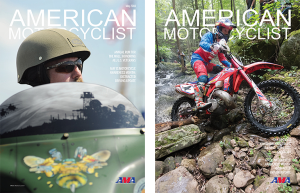American Motorcyclist May 2018
Duane Carey, Boldly Going
Former Astronaut’s Career Inspired By Motorcycling
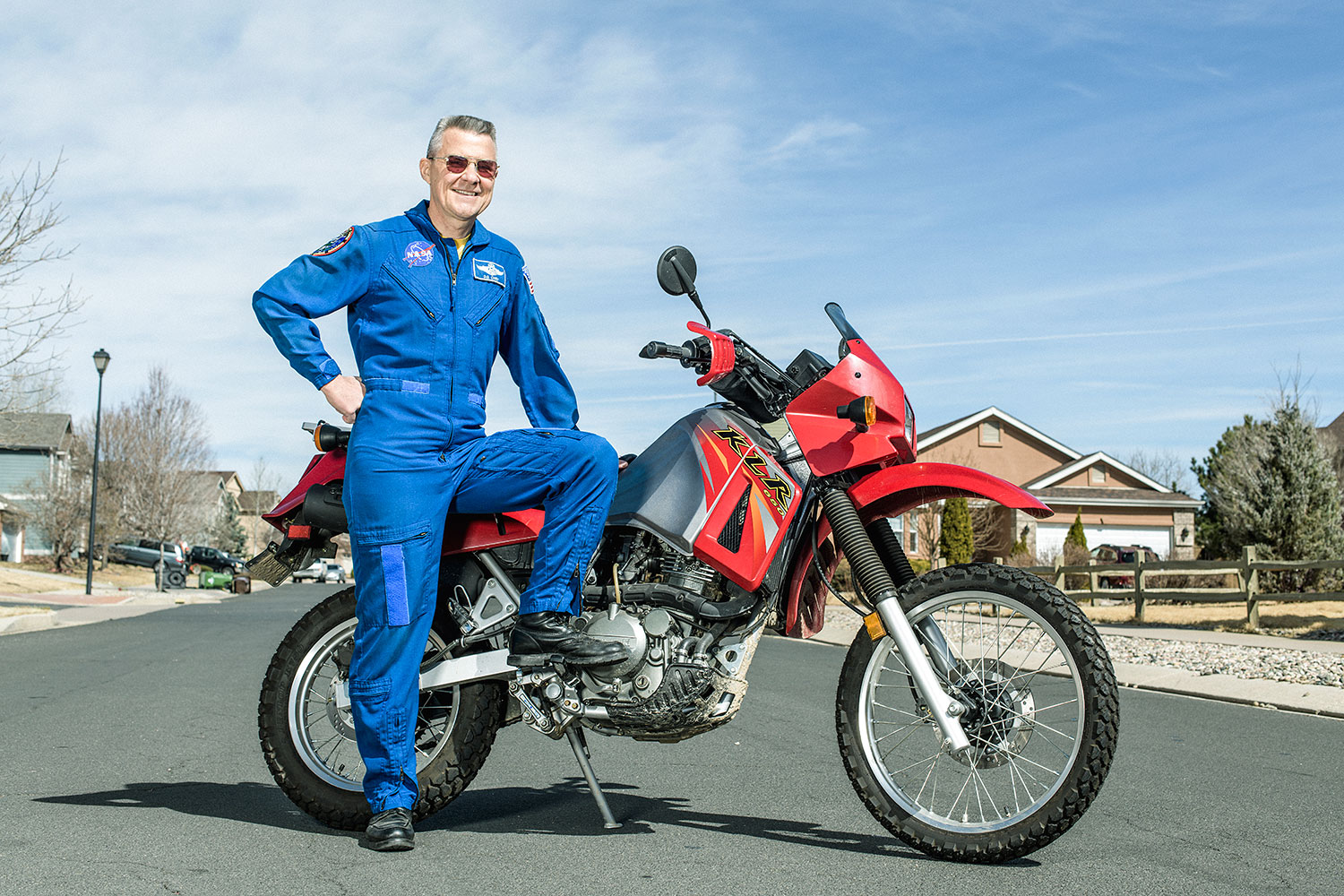
Photo By Matt Nager
By Michael Marino
Many people have experienced the fun and adventure of exploring North America on a motorcycle. Far fewer take the opportunity to explore other continents on a motorcycle. Only a few chosen souls have taken the first steps in exploring the vast cosmos beyond our planet’s crust.
AMA Life Member Duane Carey is one of the very few who can boast that he has done all of the above.
A former NASA astronaut and 49-year motorcycling veteran, Carey says his interests in interstellar and terrestrial exploration are closely intertwined.
While his successful career as an astronaut is undoubtedly the headline of his life, his path to the final frontier was not without its twists and turns. One of the more interesting aspects of Carey’s life and career is not how much Carey has been able to explore, but how Carey’s first taste of exploration on two wheels shaped the course of his adventures.
Every Explorer Starts Somewhere
Carey said his interest in exploring—both on Earth and beyond—began when he was in middle school. He started reading science fiction, which opened his mind to the notion of extended travel and the idea of one day flying in space.
About the same time, Carey made his first foray into the motorcycling lifestyle.
He bought his first bike for $200 when he was 11 years old.
“I saved up the money I made mowing lawns and bought a Honda CT70 trails bike,” he said. “It was a four-speed manual. Two hundred dollars was a lot of money for a kid to have back then.”
The little Honda enabled him to strike out on the trails of his native Minnesota.
The Racing Bug
Carey eventually learned about motorcycle competition and decided to give it a try.
He bought a Can-Am 175 to replace the Honda.
The Can-Am was a dual-purpose motorcycle, which allowed Carey to sample racing and road riding.
He joined the AMA in the mid-1970s to go racing and entered his Can-Am in several enduros during his high school years.
While Carey enjoyed racing, the Can-Am’s on-road capability opened up yet another frontier to him. He developed an ardent passion for road riding that would blossom into a lifelong enthusiasm for exploration.
The Twisty Road To Space
After graduating high school, Carey decided he did not want to go directly to college. Instead, he bought a two-stroke Suzuki GT750 for touring. Carey spent the next two-and-a-half years touring the United States “on a budget.”
During those years, Carey came to realize how much he enjoyed investigating new places. His newfound interest in pushing his own boundaries got him interested in flying.
In 1981 Carey received his bachelor’s degree in aerospace engineering and mechanics from the University of Minnesota, followed by a master’s in aerospace engineering in 1982.
While in school, Carey joined in the university’s ROTC program. Following graduation, he joined the U.S. Air Force to become a pilot.
From 1983 to 1996, Carey flew more than 4,300 hours in more than 35 types of aircraft, including the A-10 Thunderbolt II and the F-16 Fighting Falcon. He served at bases in California, Louisiana, Spain and South Korea.
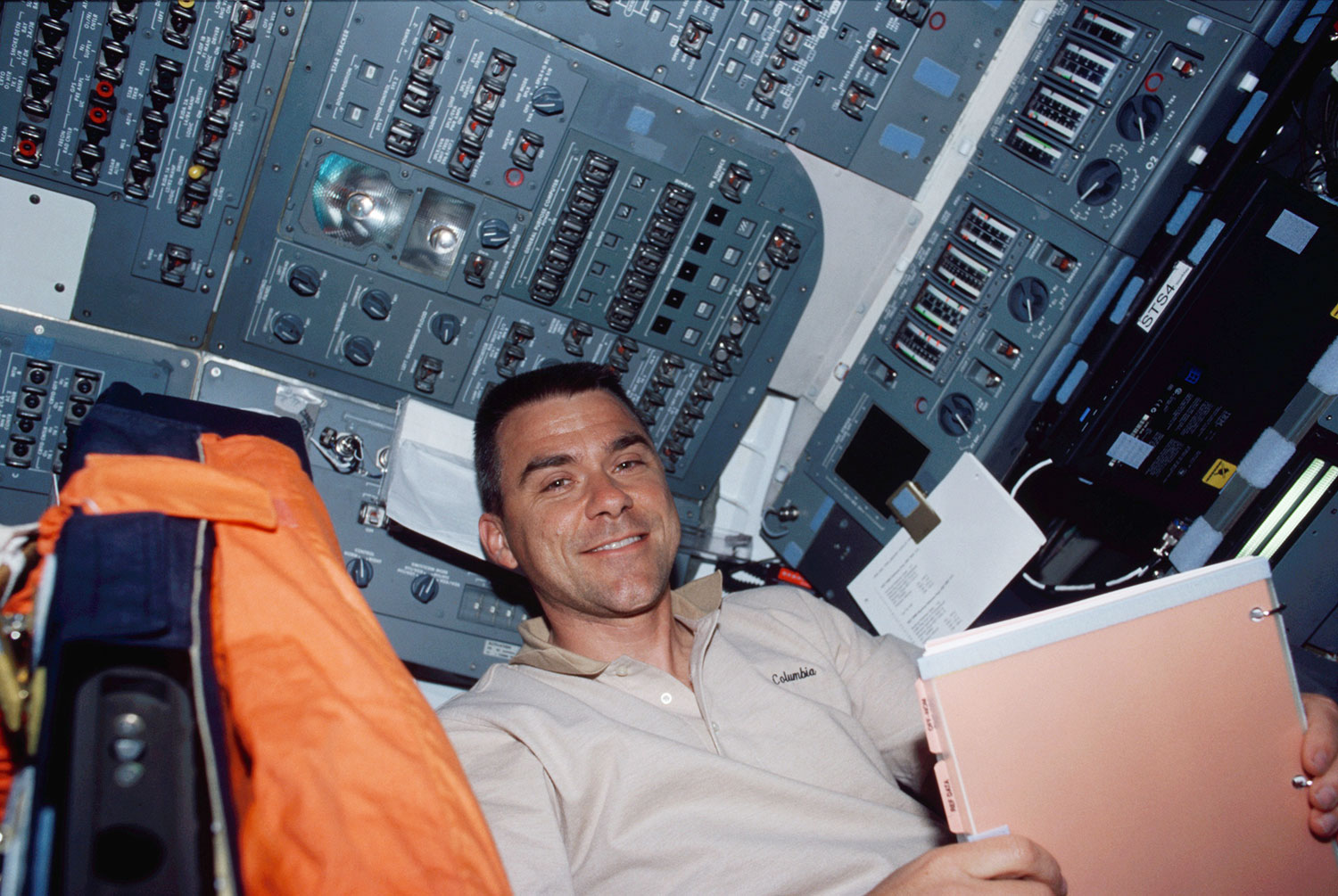 The NASA Years
The NASA Years
In 1996, Carey was given the opportunity to become a space shuttle pilot. After two years of testing and training, he entered NASA’s astronaut corps.
His big opportunity to fly in space came in March 2002 with space shuttle mission STS-109. Carey successfully piloted the Space Shuttle Columbia through an 11-day mission to service the Hubble Space Telescope.
Before leaving Earth, Carey stowed away an AMA flag in his gear. The flag went into orbit and returned with Carey, and today it is one of the many artifacts that AMA members and visitors can view and appreciate in the AMA Motorcycle Hall of Fame Museum in Pickerington, Ohio.
Carey spent his NASA years after STS-109 working in mission control in Houston. He also served on the board that interviewed and selected prospective astronauts.
During his years working at the Houston campus, Carey said his work and raising a family left little time to ride motorcycles. However, he did find a way incorporate motorcycling into his physical fitness routine.
“For training, I raced motocross,” he said.
When he and his wife did have time to ride, they took his 1981 Honda Goldwing out on Sunday mornings while their kids slept in.
“We would head out of the city, about 100 miles northeast of Houston,” Carey said. “Then, we would turn around and ride back. Living in Houston, it was great. You could ride year-round with the climate.”
Carey’s Current Frontier
Duane’s Rides
Honda Goldwing: 1832cc flat-six, SOHC 12-valve, liquid-cooled, PGM-FI
Honda ST1100: 1084cc V-4, DOHC 16-valve, liquid-cooled, carbureted
Suzuki Savage 650: 652cc single-cylinder, SOHC 4-valve, air-cooled, carbureted
Kawasaki KLR 650: 651cc single-cylinder, DOHC 4-valve, liquid-cooled, carbureted
Space Shuttle: Liquid-fuel cryogenic rocket engine, 418,000 pounds of thrust at liftoff
While no longer exploring beyond Earth’s atmosphere, Carey’s hunger for navigating our planet’s surface has not waned. Carey owns five motorcycles, and all of them are used for one type of excursion or another.
“I own a 2005 Honda Goldwing, a 2001 Honda ST1100, a 2001 Suzuki Savage 650, and two 2007 Kawasaki KLR650s,” Carey said.
A true motorcyclist now, Carey does not own a car.
“My wife owns a car,” he said. “We use it to go to the store, occasionally. The last car I owned was a 1992 Toyota pick-up truck.”
Carey now rides every chance he gets.
Carey said he has more than 380,000 lifetime miles to his credit. He has ridden in all of the lower 48 states, except Massachusetts, Rhode Island and Connecticut. He also has ridden in Canada, Mexico and South Korea.
Of all his riding adventures, Carey said South Korea is the most memorable.
“I was stationed there from 1986 to 1988,” he said. “I had a chance to explore that country by motorcycle for over a week. I was there before the Seoul Olympics, and the country was not nearly as developed as it is today. It was an amazing experience exploring such a unique place.
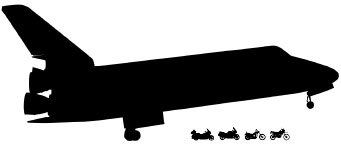 “Of all of the miles I have ridden, there have been very, very few that I have not enjoyed,” he said.
“Of all of the miles I have ridden, there have been very, very few that I have not enjoyed,” he said.
In his retirement from NASA, Carey maintains a public speaking tour, mostly at schools discussing his astronaut career.
Whenever he can, Carey rides to his speaking engagements.
His advice to youngsters interested in a career as an astronaut is pretty straightforward. “You need to do well in your math classes,” he said. “Math is a skill that can carry over to almost any job. You also need to learn how to get along with people. NASA loves someone who has developed a love of the outdoors.
“Most of all, you need to find something you are passionate about.”
The Importance Of Advocacy
STS-109: Hubble Space Telescope Servicing Mission
Space Shuttle: Columbia
Launch Pad: 39A
Launched: March 1, 2002, 6:22 a.m. ET
Landing Site: Kennedy Space Center, Florida
Landing: March 12, 2002, 4:33:05 a.m. ET
Runway: 33
Rollout Distance: 10,119 feet
Rollout Time: 77 seconds
Mission Duration: 10 days, 22 hours, 11 minutes and 9 seconds
Miles Traveled: 3.9 million
Source: www.nasa.gov
Carey remains a strong supporter of the AMA for the same reason he renewed his membership in 1981, following a lapse of several years: advocacy.
The motorcycling issue that most concerns him is distracted driving.
“I wish there was a way to show the four-wheel community that driving is a hazardous task and deserves their full attention,” he said.
Like so many motorcyclists, Carey has been a victim of distracted driving.
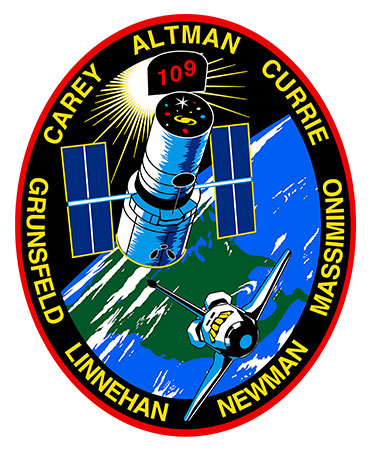 “I was at a gas station on my Suzuki Savage 650 and got rear-ended by a young woman who was distracted while driving,” he said.
“I was at a gas station on my Suzuki Savage 650 and got rear-ended by a young woman who was distracted while driving,” he said.
It was only a light impact, but Carey emphasized to the young driver the importance of giving driving her full attention.
Passion For Motorcycling
Perhaps most impressive about Carey’s story is, not its climax, but its evolution.
Americans tend to think of motorcycling as a hobby. For Carey, it was an inspiration.
Carey’s story demonstrates how powerful an experience motorcycling can be. At the same time, it demonstrates what riding can do for youth and young adults.
Whatever convinced an 11-year old Duane Carey to spend his lawn-mowing money on a motorcycle was likely the most significant influence in Carey’s life, propelling him toward a life of adventure few have experienced.
Carey offered this advice to fellow motorcyclists: “Enjoy riding your bikes while you have your health and body.”

